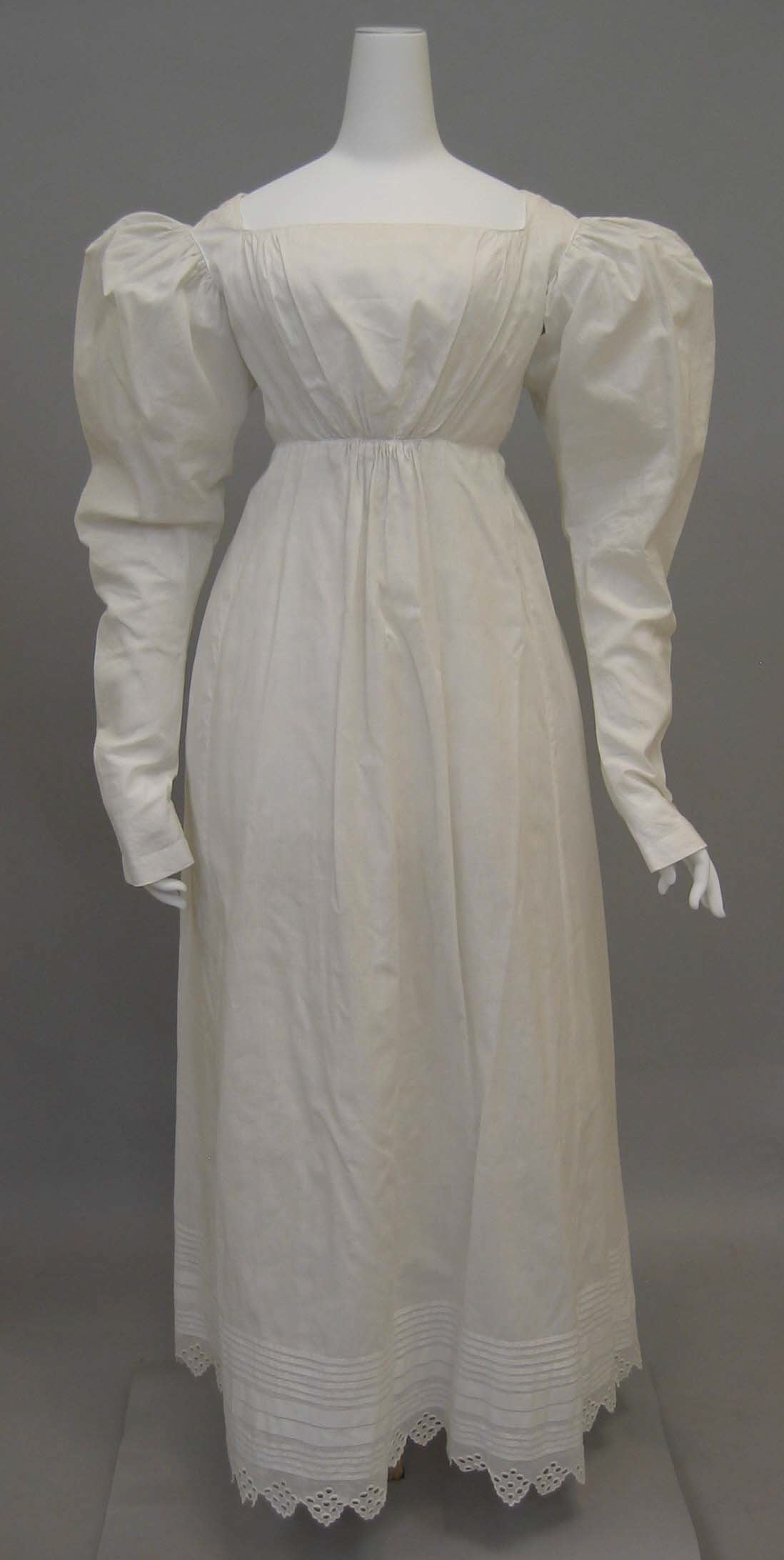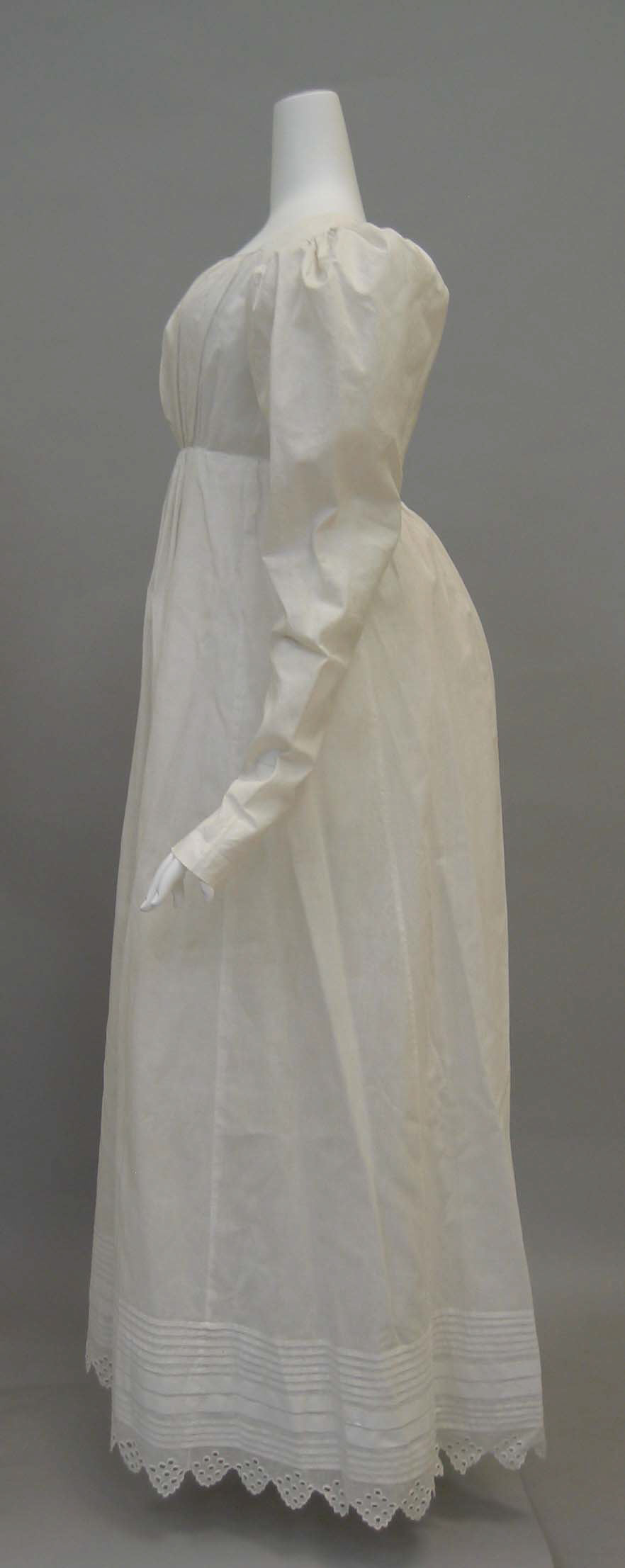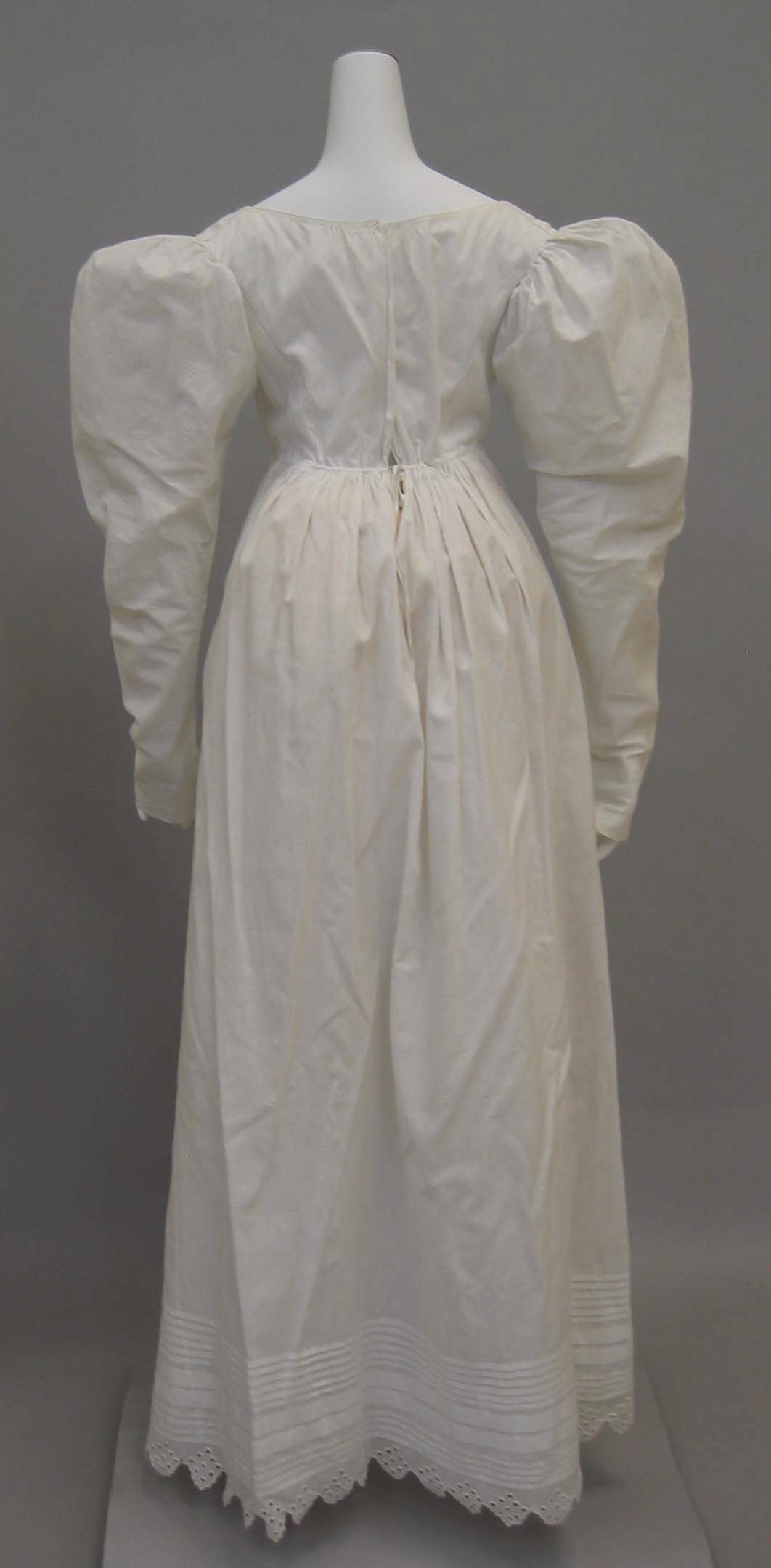Underdress
Not on view
This underdress is poised between a period of classicism, with its columnar silhouette, and eclectic romanticism, with its burgeoning skirt forms. Made of plain white cotton with an applied hem of broderie anglaise, the dress has been trimmed with fine self-piping along the seamlines of its bodice. Originally catalogued as a finished dress because of its fully constructed sleeves and the fineness of its detailed workmanship, it was more likely intended to be worn under another dress of some transparency.
The dress is sewn completely by hand, the horizontal tucks above the applied hem done painstakingly after the skirt's front and back panels were sewn together. Such tucking was a common feature of undergarments in the period and served as a decorative means to shorten the length of a skirt without cutting away material. The tucks, by fortifying the lower perimeter of a petticoat or skirt, also reinforced the fullness of the garment's flare, especially when starched.
The luxury such an undergarment embodies is as much in the nature of its maintenance as its construction: a substantial staff was required to press and launder linens and whites that were so easily sullied and wrinkled. As with the immaculately starched neckpieces of George "Beau" Brummell, this white cotton underdress was status masked as simplicity and seemingly self-effacing modesty.
Due to rights restrictions, this image cannot be enlarged, viewed at full screen, or downloaded.
This artwork is meant to be viewed from right to left. Scroll left to view more.






